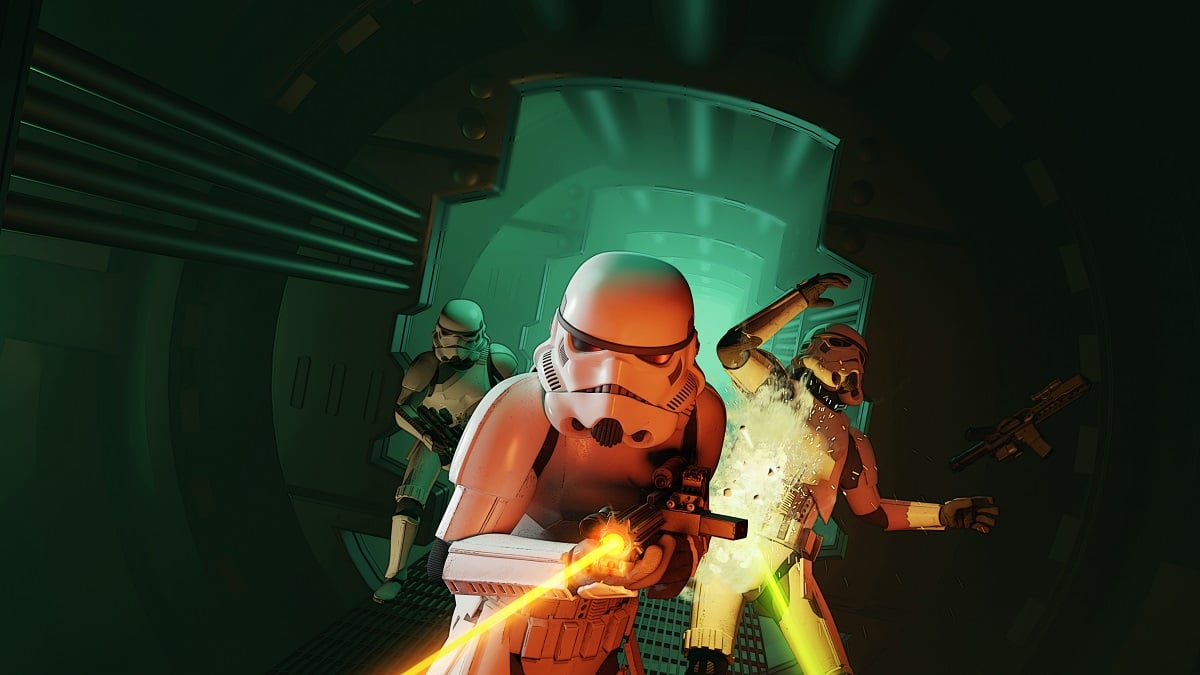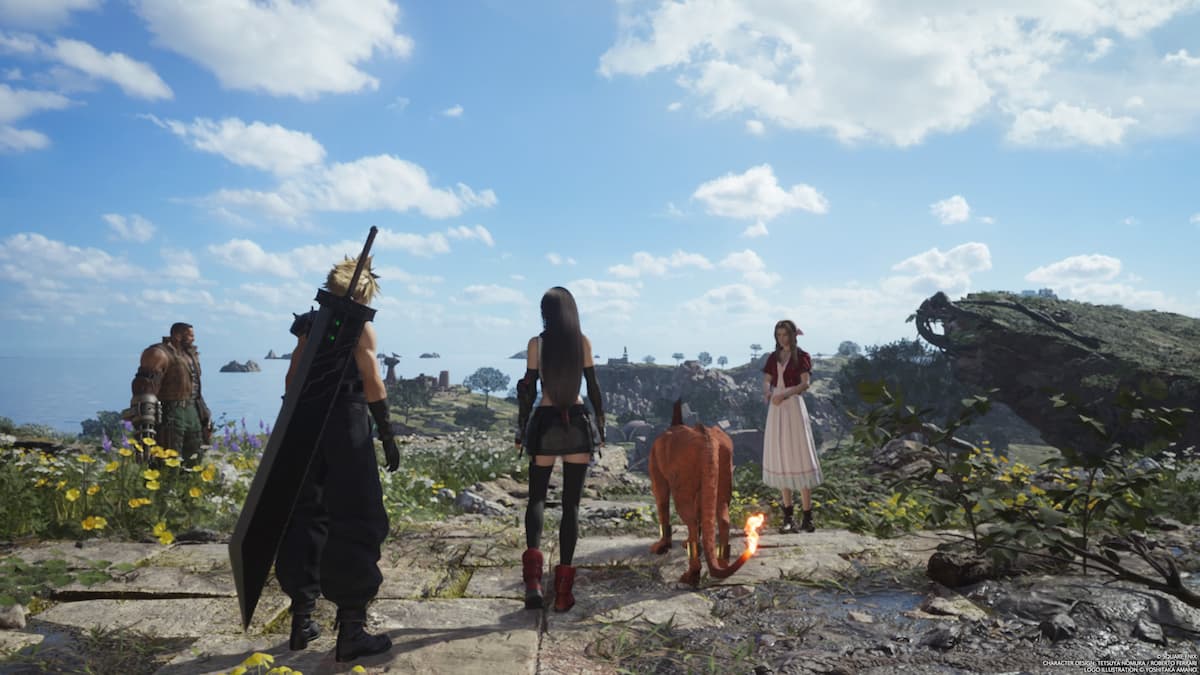Gran Turismo 7 is less concerned about being a great racing video game and is more focused on being a living encyclopedia that honors the history of automobiles. That’s not to say that the actual racing that you do in Gran Turismo 7 is bad by any means, but from the game’s opening cutscene onward, it’s clear that developer Polyphony Digital set out to make an all-encompassing experience that offers up more than just simply driving around a track in fast cars. The resulting product isn’t just a return to form for the Gran Turismo series as a whole, but it’s a game that is likely one of the most stylish and confident that I’ve ever played.
Prior to the release of Gran Turismo 7, the game’s longtime director Kazunori Yamauchi said that the latest installment in the series would be very similar to past entries. In a general sense, that’s incredibly accurate. GT7 has a ton in common with a lot of the older games in the franchise, specifically when it comes to how it’s formatted. The game starts out with you acquiring a pretty crummy car in the pursuit of teaching you the basics of driving. As time goes on, you’ll start to earn more licenses, gain money to purchase cars, and unlock additional tracks. It’s a very simple gameplay loop, but it’s one that still remains satisfying despite being so familiar.
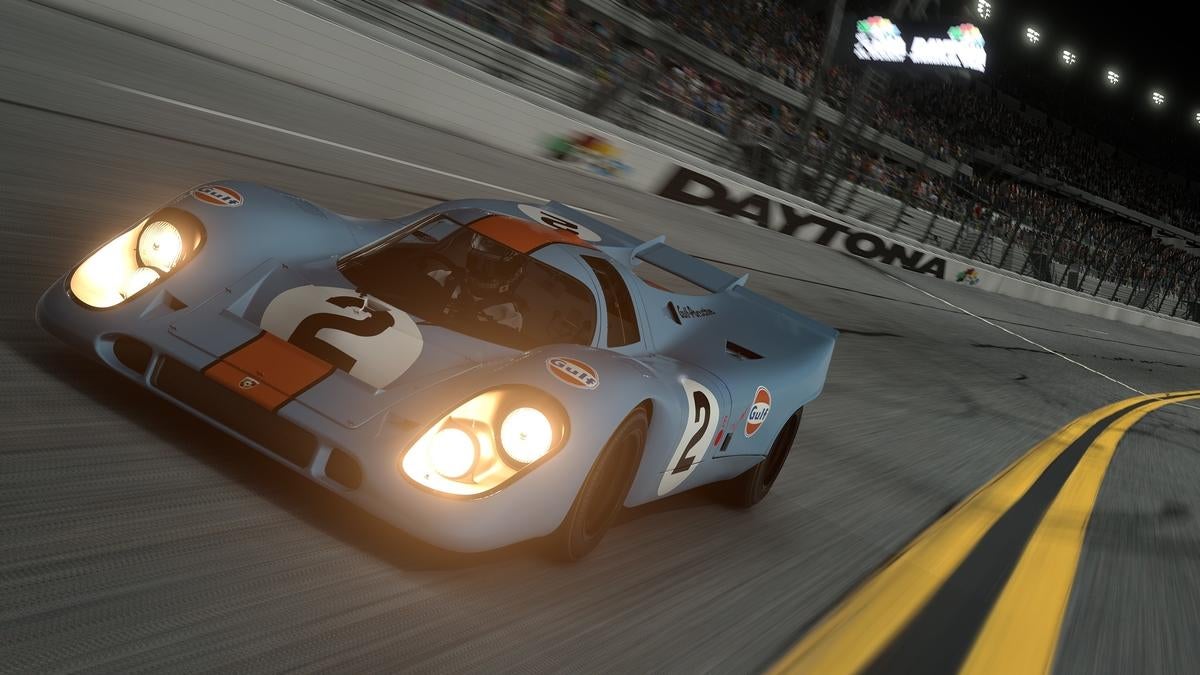
The big difference with Gran Turismo 7 from a structural perspective comes with the Cafe location. The Cafe in GT7 is a place that will essentially dole out missions for you so that you have more specific tasks that you’re focusing on at any given moment. Most of these missions end up being very straightforward (win this tournament, earn this specific car set, etc.) but they help give you a greater sense of direction and purpose.
The actual gameplay in Gran Turismo 7 is quite solid, but it’s different from most other racing games nowadays. While the Forza Horizon series has become all the rage within the past few years for the fast, arcade-like gameplay that it offers, Gran Turismo 7 is really trying to replicate a real-world driving experience. As such, I’m not sure if I would use the word “fun” to describe GT7’s gameplay. Instead, it’s very technical and comes with a learning curve that requires you to properly learn how to use your brakes, take on curves, and use your accelerator somewhat sparingly. This process of becoming a better driver over time is something that I don’t think is seen very much in other racing games, and it’s really one of the more satisfying parts of GT7. In addition, I think that this dedication to creating a legitimate driving sim also helps distinguish each of the hundreds of cars that are found in Gran Turismo 7 to great effect. The longer you play, the more you can really start to tell that each vehicle has its own specific feel that makes it unique.
Outside of the main circuits that you’ll continuously run in Gran Turismo 7, the game does feature a handful of other modes that you can spend some time with. One of these is a musical mini-game of sorts, which is introduced to you as soon as you boot up GT7 for the first time. Essentially, this mode plays music for you while you zip around a given track. The goal is to see how far you can get before the music you’re listening to comes to an end. This is a fun addition to Gran Turismo 7 overall, but it’s not game-changing by any means.
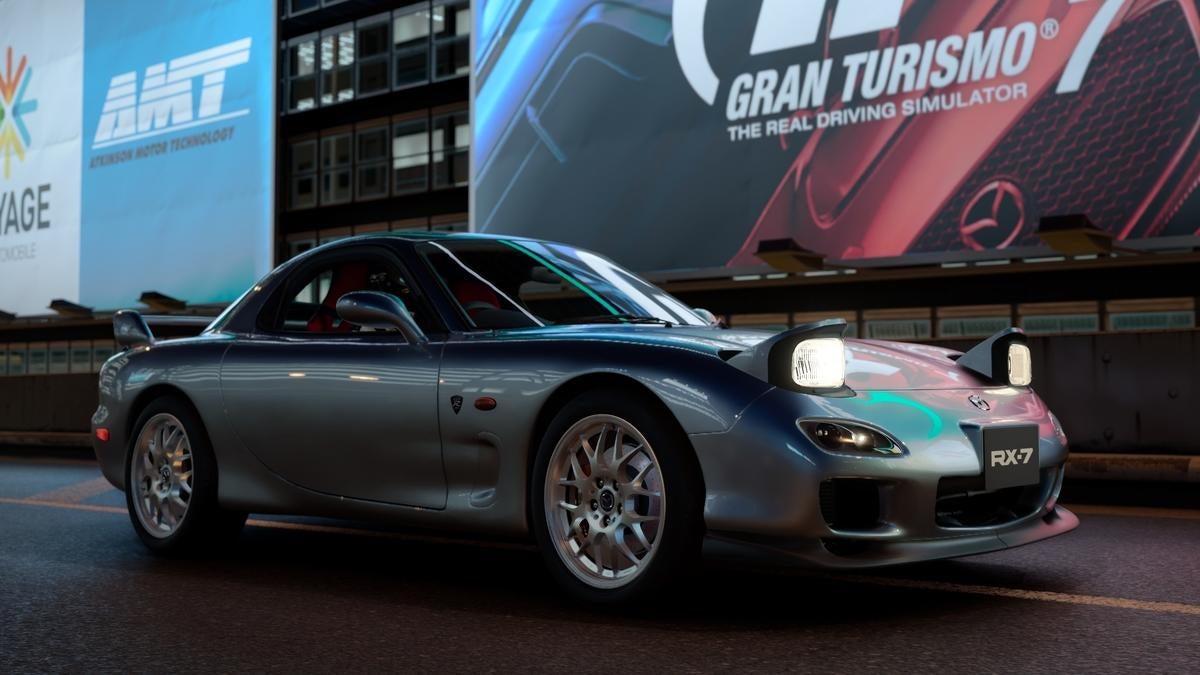
The other game mode that is included then involves multiplayer. Gran Turismo 7 doesn’t only allow you to race against your friends and other random players online, but it also brings back the Sport component that was seen in Gran Turismo Sport. Due to my limited time in the game’s pre-release phase, I wasn’t able to dabble with the multiplayer components of GT7 very much. Even though I’ve had little experience with it, I do think multiplayer should be able to keep players engaged for quite a long while.
The thing that really takes Gran Turismo 7 to an entirely new level for me comes with all of the details on the outer edges that Polyphony Digital opted to include this time around. GT7 is focused on really making you fall in love with cars, and every aspect of its presentation is meant to emphasize this. One element of the game that I particularly loved involved the long, detailed histories of nearly every car manufacturer.
Whenever you visit a certain manufacturer’s store within Gran Turismo 7, you’ll not only be presented with the option to buy cars from these companies, but you’ll also be able to view an entire history of said company from its inception. These histories aren’t only extremely long and detail-oriented, but they’re also overlaid against a larger timeline of events that have taken place in world history. For instance, in 2016, you’ll find yourself learning that not only did Dodge opt to discontinue its Viper carline, but the Cubs also won the World Series in this same year. It’s almost unnecessary how much info has been included in Gran Turismo 7, but again, it’s almost like Polyphony wants this game to be an encyclopedia for cars more than anything else.
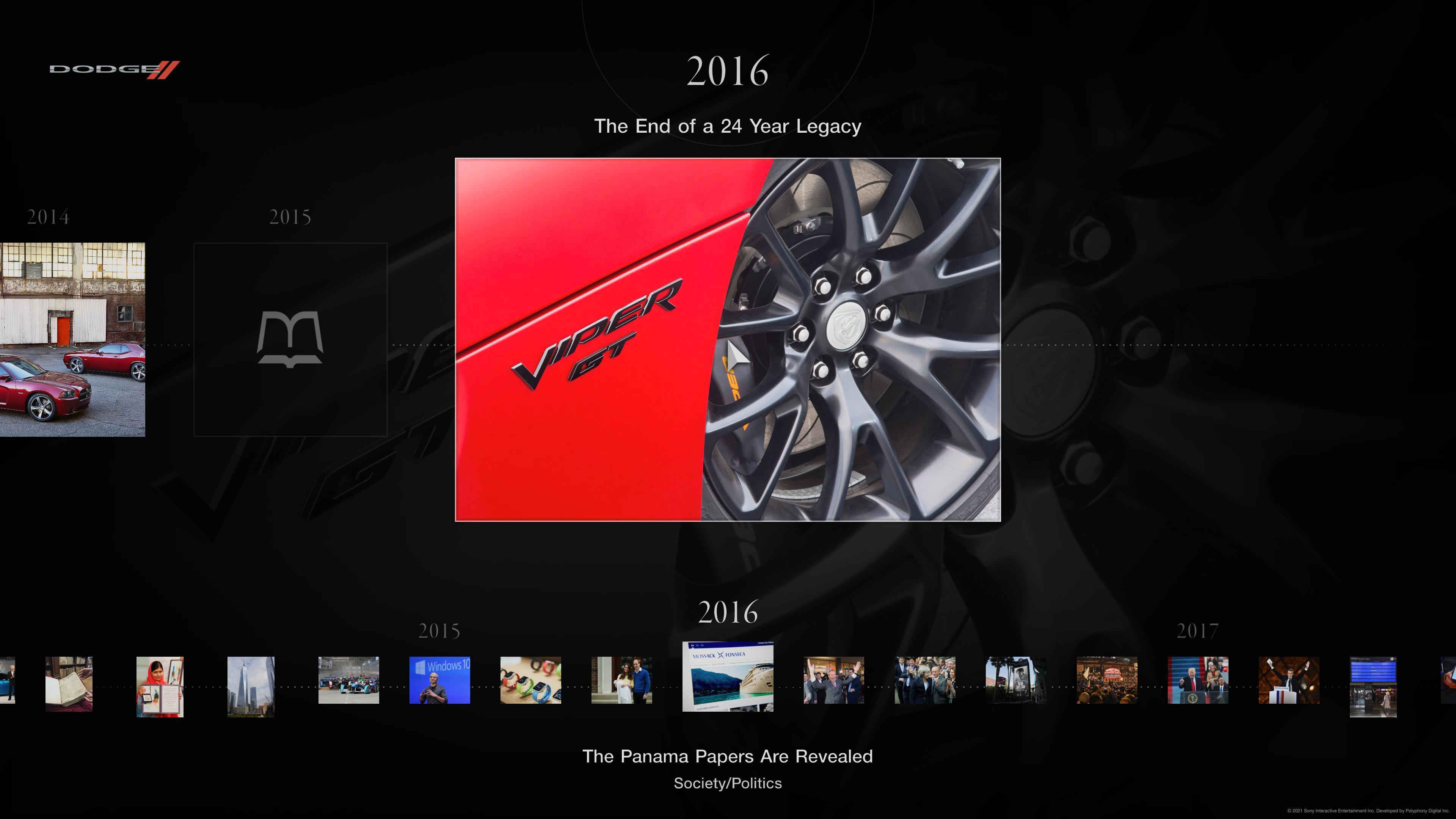
Polyphony’s obvious love for cars also shines through with the visuals of Gran Turismo 7. In simplest terms, this is a gorgeous game to look at, especially if you’re playing on a PS5. Although the actual environments in GT7 don’t look the best, every vehicle in the game is incredibly detailed and looks borderline realistic at times. I primarily played Gran Turismo 7 with a prioritization on resolution rather than performance. And while I don’t normally play games in this manner, I’m very much glad that I did because GT7 is a visual spectacle. The lighting and reflections, in particular, stood out to me as being greatly impressive.
The photo mode (known as Scapes) that has been included in Gran Turismo 7 is the thing that made me appreciate the visuals of the game even more. Gran Turismo 7’s photo mode includes literally thousands of real-world locales that you can use as a backdrop to snap pictures of your own favorite cars. To go along with this, the settings that you can use to tweak your photos are more extensive than a majority of photo modes that are included in other games. It’s really easy to lose yourself in the world of Scapes, but that’s not a bad thing by any means.
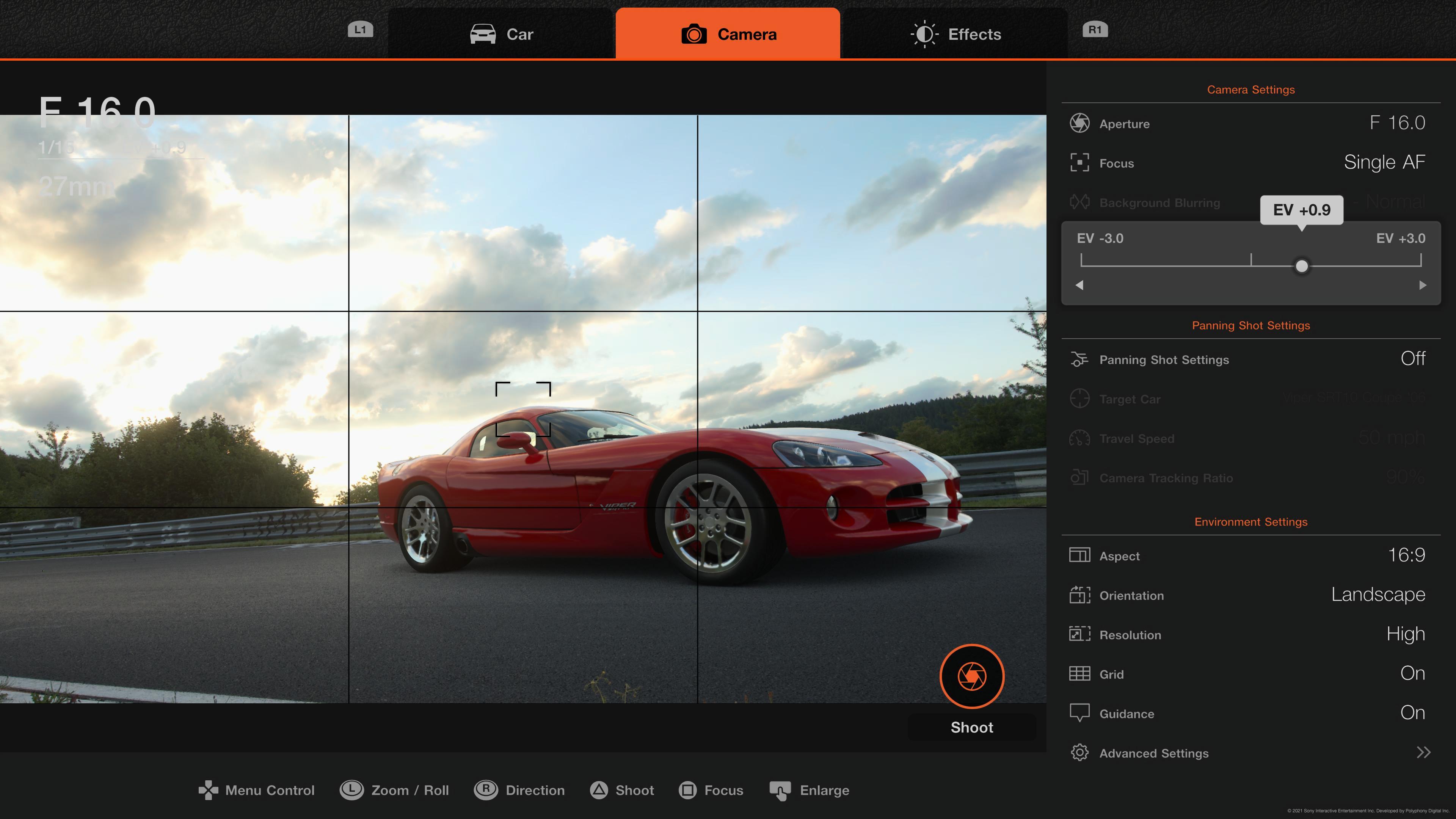
The final element of Gran Turismo 7 that really brings the whole game together comes with its selection of music. GT7’s soundtrack combines new takes on classical music with easy-listening jazz to create an atmosphere that just feels cozy. The music in Gran Turismo has always been one of my favorite components and GT7 only continues to verify this.
Gran Turismo 7 is the game that longtime fans of the series have been requesting for years. Although what’s here isn’t drastically different in format when compared to some of the earlier installments, the overall experience that Gran Turismo 7 provides is incredibly comprehensive and feels like a love letter to both car culture and the 25-year history of the Gran Turismo franchise. If you’re someone who has been playing these games since the days of the original PlayStation, Gran Turismo 7 is definitely one of the high points of the series and is worth picking up immediately.
Rating: 4.5 out of 5
Gran Turismo 7 is set to release later this week on March 4th and will be coming to both PlayStation 5 and PlayStation 4. A review copy of the game was provided by the publisher for the purpose of this review. The game itself was also reviewed on a PS5.
